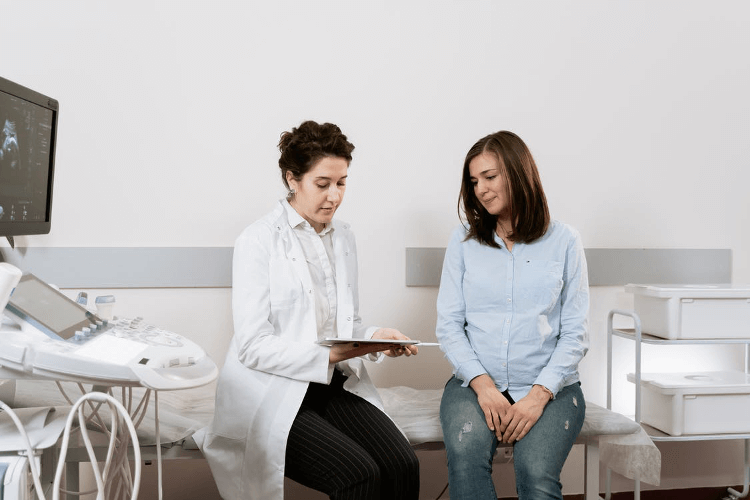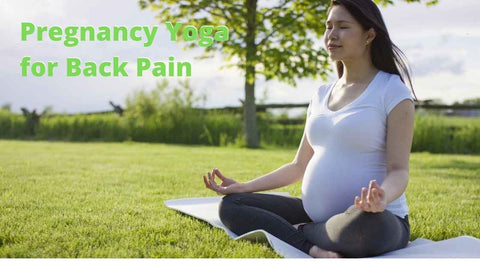Diastasis Recti In Pregnancy: Everything You Need To Know

What is Diastasis Recti?
Diastasis Recti (also known as abdominal separation) is a partial or complete separation of the rectus abdominis. Rectus abdominis muscles are also known as six-pack muscles.
In general conditions, these sets of rectus abdominal muscles assemble at the midline of your stomach.
Does every pregnant woman get Diastasis Recti?
Diastasis Recti is a common condition during pregnancy. According to several studies, 60 percent of women experience Diastasis Recti during pregnancy or postpartum.
When Does Diastasis Recti Happen?
Diastasis Recti happens when the uterus begins to stretch the muscles to make space for your growing baby.
This stretching of muscles in the abdomen region results in the separation of muscles and causes Diastasis Recti.
Does Diastasis Recti Occur Only in Pregnancy?
Diastasis Recti are not just a pregnancy-related condition and can affect anyone. Newborn babies and even men can get it.
Several newborns are born with this condition, especially if they are premature. This is because the abdominal muscles of that premature or newborn child are not fully developed. The muscles of that child are not even connected yet and there is a gap between them.
But there is no need to worry as the condition usually fixes itself over time.
What are common causes of Diastasis recti?
There are so many possible reasons for Diastasis Recti. It can be caused by lifting heavy weights inadequately or performing some excessive or unsafe abdominal exercises.
Common Symptoms of Diastasis Recti
The most common symptom of Diastasis Recti is the development of a pouch or budge in your stomach region. You will feel it especially when you contract your abdominal muscles. The other symptoms are as follows:
- lower back pain
- poor posture
- constipation
- bloating
Symptoms of Diastasis Recti During Pregnancy

The symptoms of Diastasis recti are not very noticeable during pregnancy. But you can feel a bulge or ridge developing on your belly. in your second or third trimester,
Where does the bulge appear?
You can feel a bulge or a ridge around your belly button. It would be more noticeable when you use your abs muscles to sit down, stand up, or lie down.
If you experience severe abdominal, back or pelvic pain talks to your doctor immediately.
Symptoms of Diastasis Recti During Postpartum
The most noticeable symptom of diastasis recti after your delivery is the appearance of a bulge. Your belly will look like that you are still pregnant.
The symptoms of Diastasis Recti during the postpartum period are hard to find and you can follow some tips to confirm it.
The following are some useful tips to check for symptoms of Diastasis Recti after childbirth :
- Lie down on your back in a position that your legs would be bent and your feet would be flat on the floor.
- Now, raise your shoulders slightly up off the floor, supporting your head with one head, and try to look down at your belly.
- Move the other hand all along your belly button from above to below. Try to feel any gaps between your muscles.
- If you find a gap or a separation of one or two-finger lengths, it means you are likely to have diastasis recti.
A few weeks after postpartum, the gaps might start to narrow as your muscles regain strength.
Consult a doctor
You should consult your doctor to confirm. The doctors and physical therapists used a special measuring tool called a caliper (or digital caliper) or an ultrasound.

This special medical tool can give an accurate measurement and also helps to find gaps if greater than two finger lengths.
Common Causes of Diastasis Recti During Pregnancy
The following are some causes of diastasis recti from pregnancy:
Excessive inner-abdominal pressure
The foremost cause of Diastasis Recti is excessive inner-abdominal pressure.
During pregnancy, your abdominal muscles and connective tissues start to stretch out from the expanding uterus. This stretching causes excessive pressure on the abdominal muscle which leads to diastasis recti.
Pushing during delivery
Pushing during delivery is another cause of Diastasis recti.
Myths About Diastasis Recti in Pregnancy
In past, people used to consider certain conditions as a risk factor for Diastasis recti. These conditions include:
- the body mass index (BMI)
- weight gain during pregnancy
- growing baby weight
- maternal age
But newer research finds this to be incorrect. According to a 2015 study, there is no connection between the above-mentioned risk factors with Diastasis Recti.
Does Diastasis Recti heal on its own?
In some cases, Diastasis Recti can be healed on its own or improved through exercise after the delivery. But if you are still experiencing Diastasis Recti even after childbirth, then exercise will help you to get rid of it.
You can perform a simple exercise at home or can also get help from a physical therapist or postpartum fitness specialist.
How To Treat Diastasis Recti
During Pregnancy
The separation between your abdominal muscles can weaken your core and even lead to back or pelvic pain. Because of this condition, you may have to wear an abdominal binder or a Tubigrip for support during the daytime.
There are certain tips that you can follow to be more careful with Diastasis Recti. Have a look at the instruction:
- Avoid lifting heavy objects or further straining your abdominal muscles, especially after your delivery.
- Practice good posture.
- Try to provide support to your lower back when sitting down. Choose a comfortable chair with support or put a pillow under your lower back.
- Bend your knees, roll, and support yourself with your arm when getting in or out of the bed.
- Avoid sitting on the floor, But if you need to sit on the floor then use the support of your arms while getting up.
- Consider pregnancy-safe exercise for diastasis recti. Light physical exercise will help to strengthen your core.
Postpartum Treatment
Postpartum treatment for diastasis recti involves two kinds of exercises.

Always consult your doctor and get their approval before starting any workout.
Other things to avoid:
There are some things that you should avoid to prevent worse conditions. Things like traditional crunches, sit-ups, and planks postpartum should be strictly restricted until your abdomen is completely healed from diastasis recti.
Certain other things also need to be avoided:
- Avoid any strenuous exercise that can put pressure at the point where the bulge is coming out of your belly.
- Avoid holding your baby on one hip even if it's painful
- Avoid lifting or carrying heavy loads
- Avoid coughing without supporting your abs muscles
Does Diastasis Recti Have Any Compilations?
Although Diastasis Recti is not a big concern in some cases, it can lead to compilation and side effects. Following are some compilations related to this condition:
- jeopardized trunk
- stability and mobility
- back and pelvic pain
- damage to your posture
- pelvic floor dysfunction
- hernia ( but only in severe cases)

How to Prevent Diastasis Recti?
Diastasis recti can be prevented by using certain things. Begins your practice to strengthening your core during your pre-pregnancy,
- The core strengthening exercises include your pelvic floor and oblique muscles. Try to use a good form while performing an abdominal exercise.
- You should also avoid those exercises that can cause back strain or cause your belly to bulge out.
- You can also take guidance from a professional trainer for help.
Final thoughts
You should consult a physical therapist who is specialized in postpartum recovery. He/she can recommend the most accurate exercise that helps with diastasis recti symptoms.
If the pain is severe and you are feeling discomfort while performing life’s daily tasks, surgery can be an option for you.
Talk to your health care provider about the relevant treatment that is best for you.



